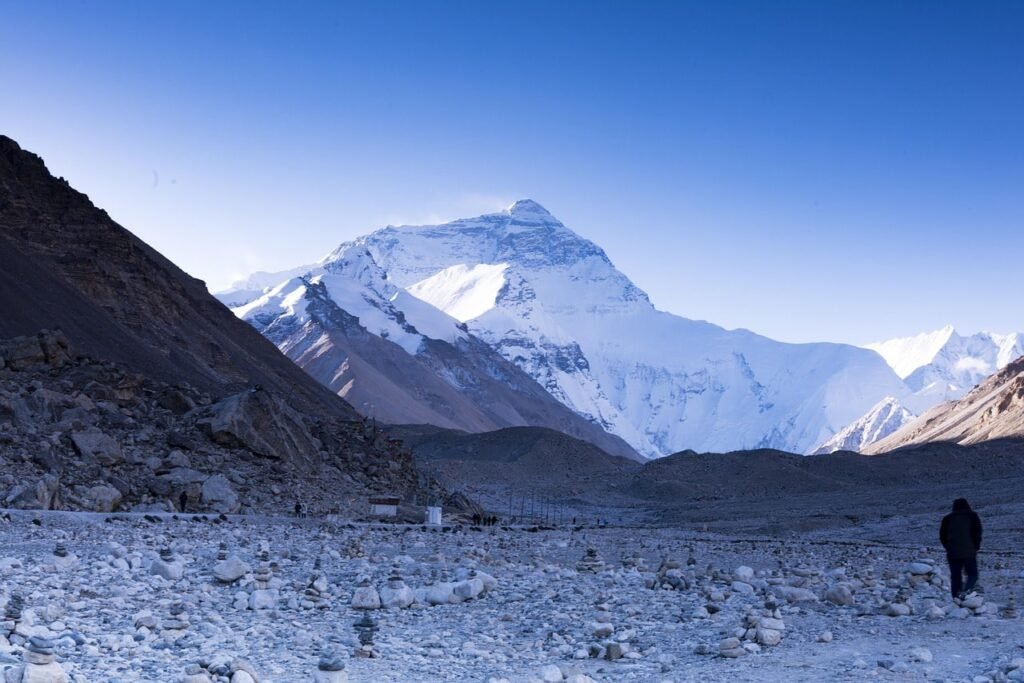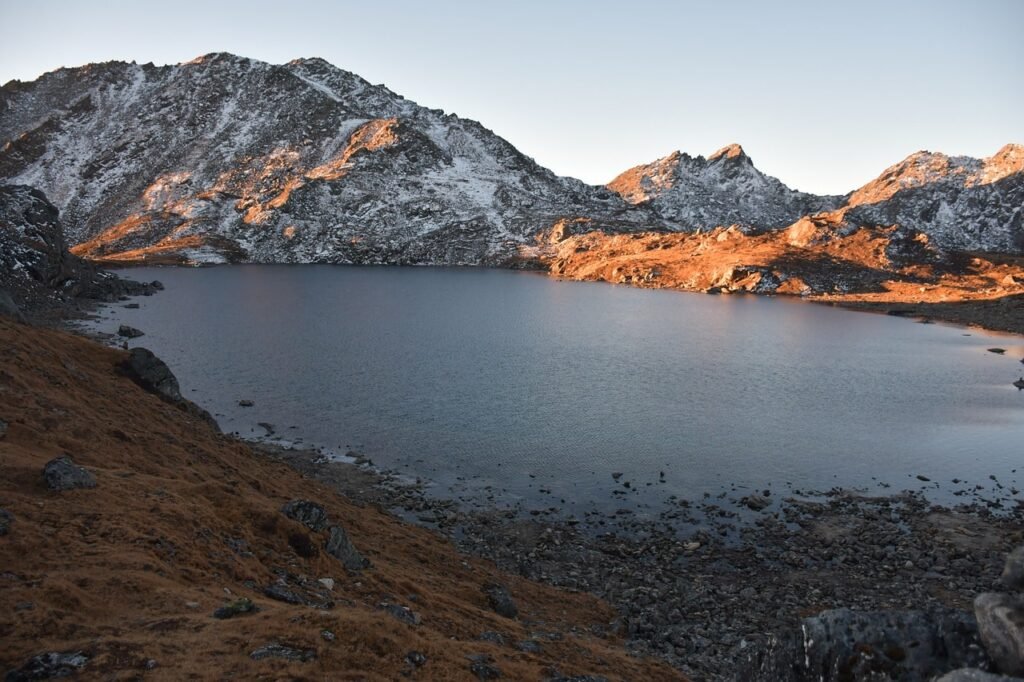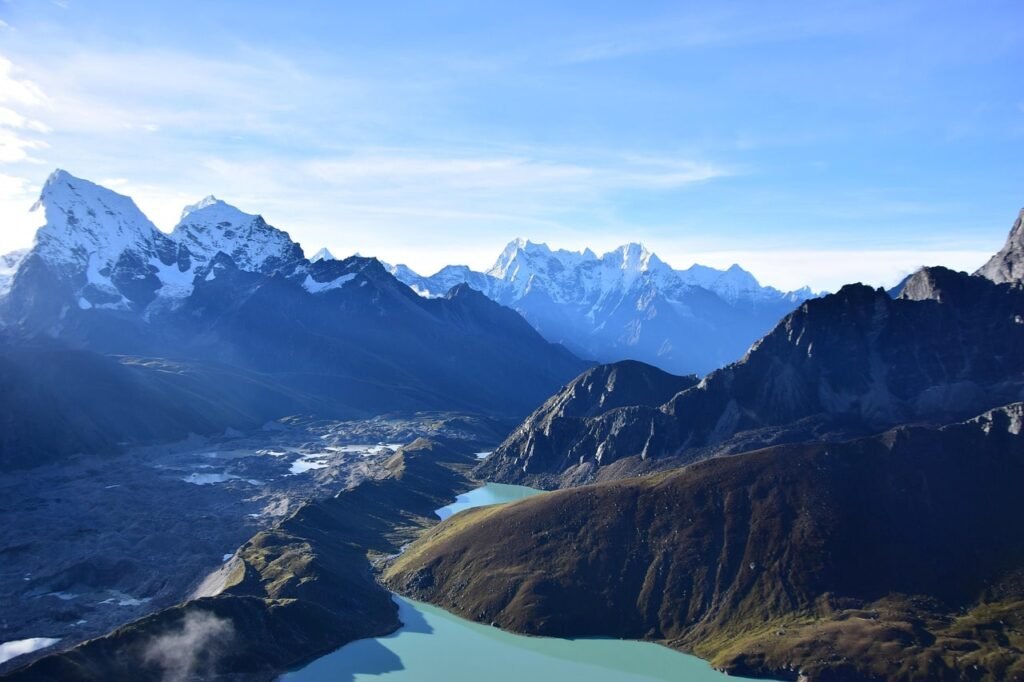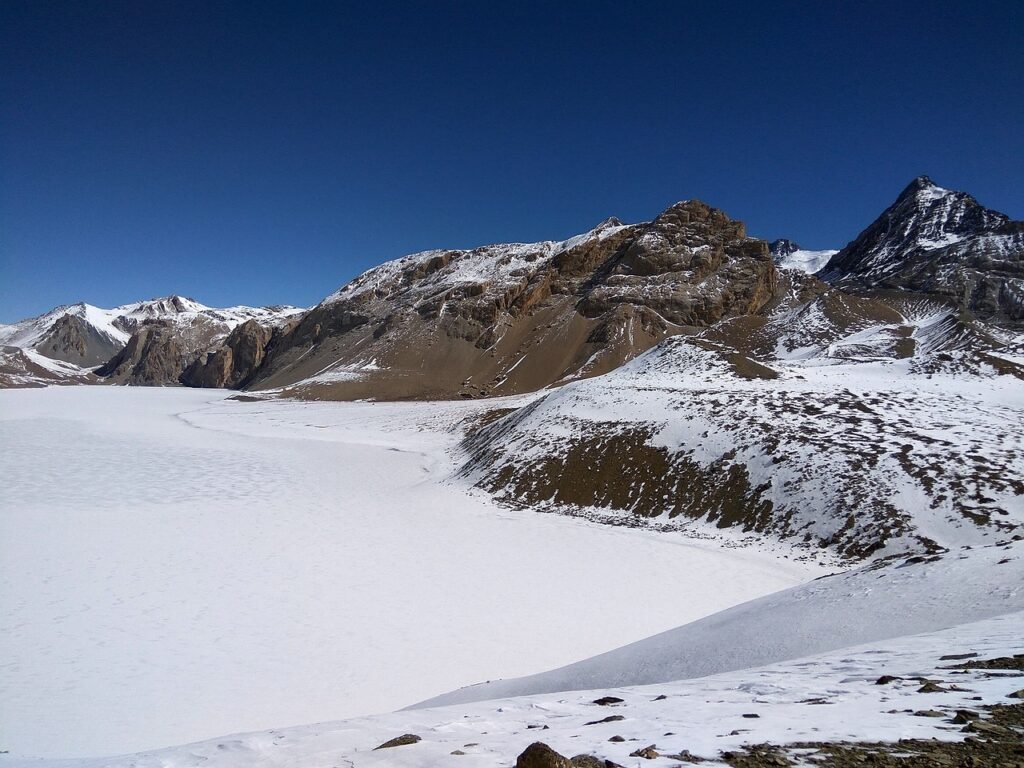Are you looking for the best treks in Nepal and planning to explore this beautiful country on your own or with a guided tour? If yes, you’ve come to the right place! In this blog, we’ll walk you through the top trekking routes in Nepal, covering everything you need to know from required permits to accommodation options.
Nepal, a landlocked Himalayan country, is world-renowned as a trekker’s paradise. Home to eight of the world’s 14 highest peaks, including Mount Everest and Annapurna, Nepal offers many trekking options ranging from short, scenic walks to challenging high-altitude expeditions. Whether you’re a first-time visitor or an experienced hiker seeking solitude, Nepal’s diverse trekking regions cater to every adventurer’s dream. In this blog, we’ll explore the best treks in Nepal, covering everything you need to know from highlights and difficulty levels to permits and the best seasons to go.
Everest Base Camp Trek
The Everest Base Camp (EBC) trek is perhaps the most iconic adventure in the world. Located in the Khumbu region of eastern Nepal, this trek takes you to the foot of the world’s highest mountain Mount Everest (8,848.86 meters). Along the way, you’ll pass through traditional Sherpa villages like Namche Bazaar and Tengboche, visit ancient monasteries, and traverse hanging suspension bridges draped with prayer flags. The highlight of the journey is the panoramic view from Kala Patthar (5,545 meters), offering a front-row seat to Everest, Lhotse, Nuptse, and Ama Dablam.

EBC is a moderately challenging trek that typically takes 12 to 16 days. Trekkers must fly to Lukla and adjust to the high altitude gradually. While accommodations are available throughout the route in teahouses, the facilities become more basic as you ascend. Permits required include the Sagarmatha National Park Permit and the Khumbu Rural Municipality Permit. The best times to go are spring (March to May) and autumn (September to November) when skies are clear and trails are vibrant.
Annapurna Circuit Trek
The Annapurna Circuit Trek is a classic Himalayan adventure that circles the Annapurna Massif, offering some of Nepal’s most varied and dramatic landscapes. The trail starts in the lush, terraced lowlands and gradually ascends into high-altitude alpine zones before crossing the Thorong La Pass (5,416 meters), one of the world’s highest trekking passes.
The diversity in scenery rivers, waterfalls, pine forests, rocky cliffs, and desert plateaus makes this trek one of the most rewarding in the world.
Spanning 14 to 18 days, the Annapurna Circuit is of moderate difficulty and suitable for most physically fit trekkers. Villages like Manang and Muktinath provide cultural insights into Tibetan Buddhist traditions. The trek requires the Annapurna Conservation Area Permit (ACAP) and a TIMS card. You can start or end your trek in different locations depending on your time and preferences, and optional side trips include the stunning Tilicho Lake. The best time to trek here is during the spring and autumn seasons.
Manaslu Circuit Trek
The Manaslu Circuit Trek is gaining popularity for its raw beauty and peaceful trails. Circling Mount Manaslu (8,163 meters), the world’s eighth-highest peak, this trek offers a secluded experience through remote villages, roaring rivers, and dramatic mountain passes like the Larkya La (5,160 meters). The region is rich in Tibetan Buddhist culture, and trekkers often encounter monasteries, mani walls, and chortens along the route.
This trek usually takes 14 to 17 days and is considered challenging due to its remoteness and altitude.

A special restricted area permit is required, and trekkers must be accompanied by a licensed guide. You’ll also need the ACAP and MCAP permits. The trail infrastructure is improving, with basic teahouses now available, but it’s still less commercialized than Everest or Annapurna. Spring and autumn are ideal times to enjoy the clear skies and moderate temperatures.
Langtang Valley Trek
Located just a few hours’ drive from Kathmandu, the Langtang Valley Trek is a perfect choice for those with limited time. The trail takes you through dense forests, rivers, and alpine meadows to the high-altitude village of Kyanjin Gompa. From here, trekkers can climb Tserko Ri (4,984 meters) for panoramic views of the Langtang range and surrounding glaciers. The trek is enriched by the presence of the Tamang people, whose Tibetan-influenced culture adds depth to the journey.

This moderately difficult trek can be completed in 7 to 10 days. Despite the region being hit hard by the 2015 earthquake, it has since recovered, and tourism is gradually returning. Trekkers need a Langtang National Park Permit and a TIMS card. The route features teahouse accommodations, making it a comfortable trek for beginners and families alike. The best seasons are March to May and September to December.
Mardi Himal Trek
For a short and less crowded alternative in the Annapurna region, the Mardi Himal Trek is a true gem. Starting near Pokhara, this trail winds along a narrow ridge that offers jaw-dropping views of Machapuchare (Fishtail), Annapurna South, and Hiunchuli. The trek leads to the Mardi Himal Base Camp (4,500 meters), where sunrise and sunset views light up the entire range.
The trek is ideal for those with limited time, taking just 5 to 7 days. It’s considered easy to moderate, making it suitable for beginners. While the infrastructure is basic, comfortable teahouses are available. This trek requires an ACAP permit and a TIMS card. Spring and autumn are the best times to enjoy the rhododendron forests in bloom and the clearest mountain views.
Upper Mustang Trek
The Upper Mustang Trek offers a rare chance to explore a trans-Himalayan desert landscape and ancient Tibetan culture. Once a restricted kingdom, Upper Mustang remained isolated from the outside world for centuries. The trek leads to Lo Manthang, the region’s ancient capital, where whitewashed houses, centuries-old monasteries, and sky caves offer a glimpse into a bygone era.
This trek typically takes 12 to 15 days and is of moderate difficulty. Because it lies in a rain shadow, it’s one of the few treks in Nepal suitable during the monsoon (May to October). A restricted area permit is required, which costs $500 for 10 days, and you must trek with a licensed guide. Though more expensive than other treks, the cultural depth and surreal scenery make it a once-in-a-lifetime experience.
Gokyo Lakes Trek
For those seeking a less crowded alternative to the Everest Base Camp Trek, the Gokyo Lakes Trek is a fantastic choice. The trail leads to a chain of turquoise glacial lakes in the Gokyo Valley and culminates at Gokyo Ri (5,360 meters), offering spectacular views of Everest, Lhotse, Makalu, and Cho Oyu. You can also opt to cross the Cho La Pass and connect with the EBC trail.

The trek is moderately challenging and takes around 12 to 14 days. Trekkers follow the same initial route to Namche Bazaar before diverging into the quieter Gokyo Valley. Required permits are the same as for EBC—Sagarmatha National Park and Khumbu Municipality permits. It’s best trekked in the spring and fall seasons when trails are dry and skies are clear.
Kanchenjunga Base Camp Trek
The Kanchenjunga Base Camp Trek takes you to the base of the world’s third-highest mountain, Kanchenjunga (8,586 meters), and offers perhaps the most remote and pristine trekking experience in Nepal. This 20 to 25-day journey passes through untouched forests, high passes, and diverse ethnic communities, from Rai and Limbu villages to Tibetan settlements.
It’s a strenuous trek meant for experienced trekkers seeking solitude.
The area is a restricted zone, requiring a special permit and guide. Few lodges exist, so camping is necessary in some sections. Despite its difficulty and remoteness, the rewards are enormous—unspoiled nature, rare wildlife, and cultural authenticity. The best time to go is in April–May and October–November.
Helambu Trek
If you’re short on time or looking for a gentle introduction to trekking in Nepal, the Helambu Trek is a great option. Located north of Kathmandu, the trail passes through Hyolmo villages, Buddhist monasteries, and rhododendron forests. Though relatively close to the capital, it offers surprising serenity and natural beauty.
The Helambu Trek is easy and can be completed in 6 to 8 days. With a maximum altitude of 3,650 meters, it’s a safe choice for those concerned about altitude sickness. Required permits include the Langtang National Park Permit and a TIMS card. It’s trekable year-round, though spring and autumn offer the most pleasant weather.
Tilicho Lake Trek
The Tilicho Lake Trek, in Nepal’s Annapurna region, leads to Tilicho Lake one of the highest lakes in the world at 4,919 meters. The trek offers stunning views of snow-capped peaks, deep gorges, and alpine forests, passing through remote villages and rugged trails. It’s a quieter, less crowded route perfect for those seeking solitude and a true Himalayan wilderness experience.

More than just beautiful scenery, the trek challenges your endurance with steep climbs and high passes. Along the way, you’ll discover ancient monasteries and traditional Gurung and Thakali villages. The serene turquoise lake, surrounded by towering peaks, creates a magical, unforgettable setting for adventurers and nature lovers alike.
Dhaulagiri Circuit Trek
For serious adventurers, the Dhaulagiri Circuit Trek is one of Nepal’s most demanding and rewarding trails. It circles Mount Dhaulagiri (8,167 meters), the seventh-highest peak in the world, and involves crossing high passes like the French Pass (5,360 meters) and the Dhampus Pass (5,240 meters). This trek is remote, wild, and requires full camping support.
Lasting 18 to 21 days, the Dhaulagiri Circuit is not for the faint-hearted. It demands excellent physical fitness, experience with altitude, and proper preparation. The trek requires an ACAP permit and a team of guides and porters due to the lack of teahouses along many parts of the trail. Spring and early autumn are the best seasons to attempt this extreme adventure.
Summary
Trekking in Nepal is more than just walking through mountains—it’s a spiritual journey, a cultural immersion, and a test of endurance. Each trekking region offers a unique blend of landscapes, people, and experiences. Whether you choose to follow the footsteps of legendary mountaineers to Everest, wander the quiet paths of Manaslu, or lose yourself in the mystique of Mustang, the Himalayas have a way of leaving a lasting mark on your soul. With the right planning, preparation, and mindset, your trek in Nepal will be an adventure of a lifetime.
Best Circuit Trekking In Nepal - Trackernepal
[…] Read More: Best Treks in Nepal […]